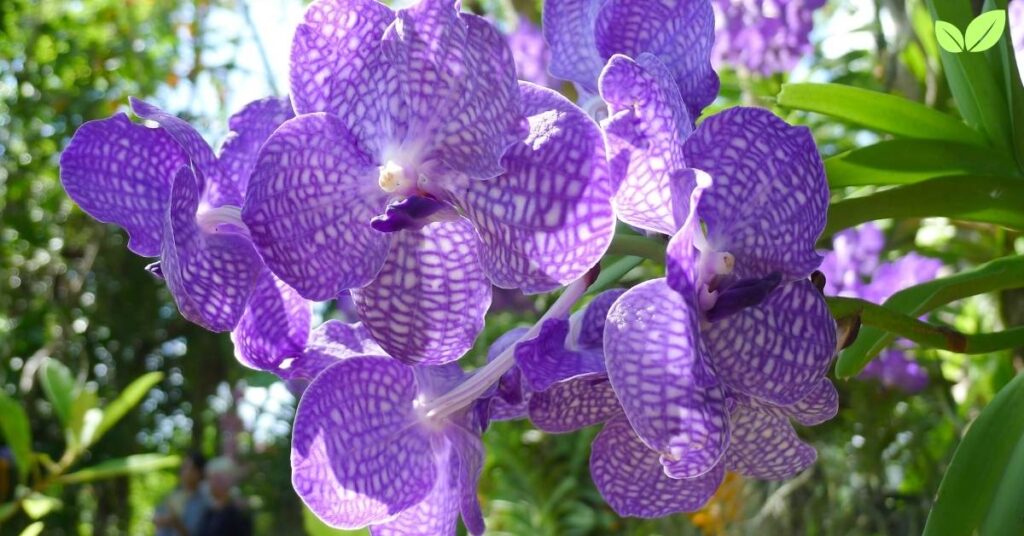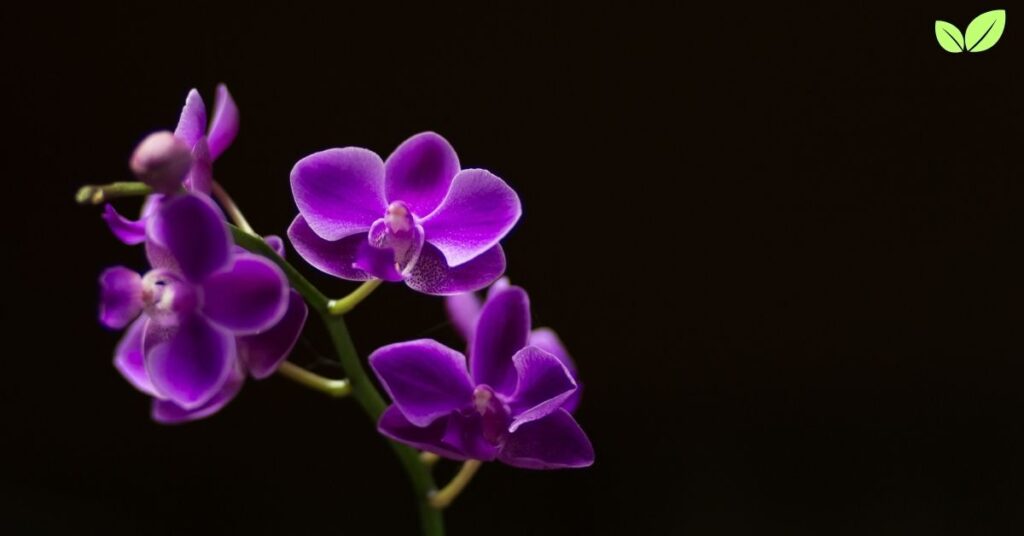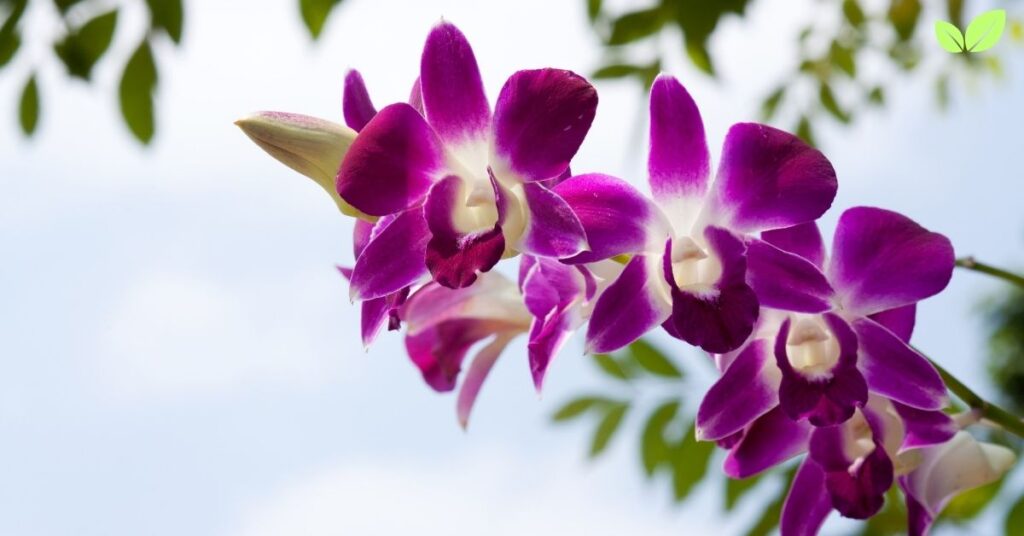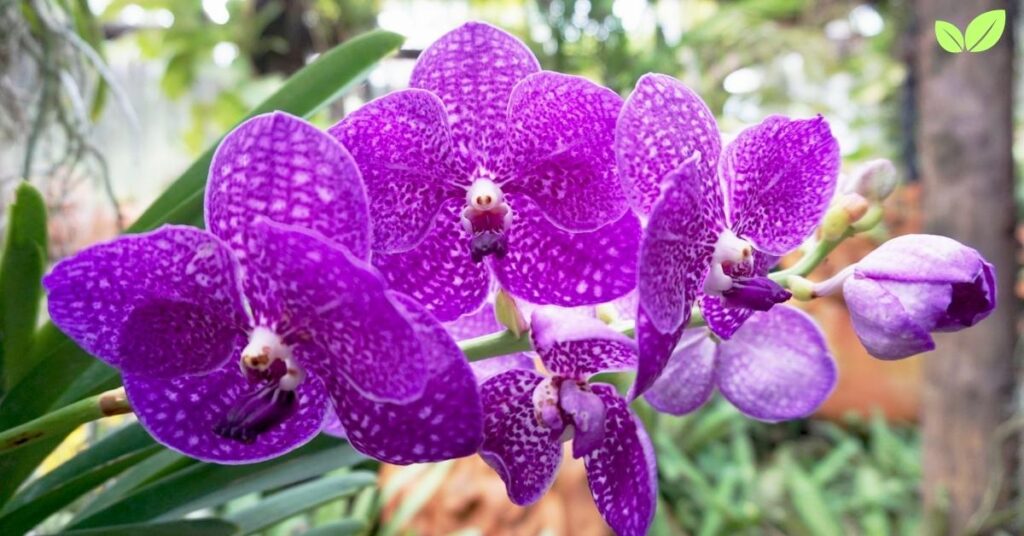Introduction to Purple Orchids and Their Environmental Significance
Orchids, members of the Orchidaceae family, are among the most diverse and widespread flowering plants on Earth, with over 25,000 species globally. Purple orchids, in particular, are found in a variety of genera, including Orchis, Dactylorhiza, Vanda, and Phalaenopsis, each exhibiting unique adaptations to their specific environments. Known for their vibrant purple hues, intricate petal structures, and captivating beauty, purple orchids are often cultivated for ornamental purposes. However, these remarkable plants also serve important ecological functions, such as supporting pollinator networks, contributing to biodiversity, and maintaining ecosystem balance.
Exploring the environmental niche of purple orchids involves understanding their preferred habitats, interactions with other species, adaptations, and roles in their ecosystems. By examining the significance of purple orchids in natural settings, we can appreciate their contributions to ecological health and biodiversity while recognizing the conservation needs they face.
The Ideal Habitat and Growing Conditions of Purple Orchids
Purple orchids are primarily found in tropical and subtropical regions, although some species are adapted to temperate environments. Their specific habitat preferences depend on factors such as light, moisture, temperature, and soil or substrate characteristics, which vary widely across different orchid species.

1. Climate and Temperature Preferences
Purple orchids are commonly associated with tropical and subtropical climates, where temperatures are consistently warm, humidity levels are high, and rainfall is frequent. However, some species, like the purple varieties within Dactylorhiza, thrive in temperate climates and can withstand cooler temperatures.
Most tropical orchids prefer temperatures between 65°F and 85°F (18°C to 29°C) and suffer damage if exposed to temperatures below 50°F (10°C) for prolonged periods. These orchids typically grow in rainforest understories, where filtered sunlight and consistent humidity create an ideal environment. Temperate purple orchids, such as those found in the genus Orchis, grow in woodlands, grasslands, and mountainous regions, demonstrating greater tolerance to seasonal temperature fluctuations.
Light is another critical factor for orchid growth. While tropical orchids often grow as epiphytes on trees in low to moderate light, temperate orchids may receive more direct sunlight, depending on their habitat. The interplay of temperature, humidity, and light availability defines the niche of each purple orchid species, making it highly specialized to its specific environmental conditions.
2. Soil and Substrate Adaptations
Orchids are unique in their diverse adaptations to different substrates, from terrestrial to epiphytic and even lithophytic (rock-dwelling) lifestyles. Many purple orchids, especially tropical species, are epiphytes, meaning they grow on other plants, such as trees, without taking nutrients from the host. This adaptation allows them to access sunlight in dense forests and avoid competition for nutrients at ground level. Epiphytic orchids derive nutrients from organic debris collected in crevices of tree bark and rely on specialized root structures to absorb water and nutrients directly from the air and rain.
Terrestrial orchids, which grow in soil, are more common in temperate regions. Purple terrestrial orchids like Orchis mascula (early purple orchid) prefer well-draining, nutrient-poor soils and are often found in grasslands, forests, and meadows. These species typically have tuberous roots that help them store nutrients and water, allowing them to endure seasonal changes.
3. Water Requirements and Drought Adaptations
Water availability is a critical factor for orchids, particularly for epiphytic species that rely on rainwater and humidity to meet their moisture needs. Epiphytic orchids are adapted to capture and store water efficiently, and many have thick, waxy leaves to reduce water loss through transpiration. In contrast, terrestrial purple orchids have tuberous roots that help them endure periods of drought by storing water and nutrients.
Orchids demonstrate a remarkable ability to tolerate varying moisture levels within their specific habitats. By occupying different environmental niches, orchids reduce competition with other plants, each species adapted to maximize water and nutrient uptake in its respective environment.
The Ecological Role of Purple Orchids in Natural Ecosystems
Purple orchids contribute to ecosystem health and biodiversity through their complex interactions with other species, particularly pollinators and mycorrhizal fungi, and by supporting various ecological processes within their habitats.

1. Pollinator Attraction and Pollination Strategies
One of the most important roles that orchids play in ecosystems is supporting pollinator networks. Orchids have highly specialized pollination strategies, often evolving intricate petal structures, scents, and colors to attract specific pollinators. Purple orchids are no exception and are known to attract a wide range of pollinators, including bees, butterflies, moths, and even birds, depending on the species.
The shape and color of orchid flowers are often adapted to specific pollinators. For example:
- Bees and Butterflies: Purple orchids like Orchis mascula use color and scent to attract bees and butterflies, which transfer pollen from one flower to another.
- Moths: Some nocturnal orchids produce strong scents at night, attracting moths that pollinate them under low light conditions.
- Birds: In tropical regions, orchids may attract hummingbirds and other nectar-feeding birds, which play a crucial role in pollination.
These pollination relationships highlight the orchid’s role as a keystone species in many ecosystems, supporting not only pollinators but also other species that rely on these pollinators within the food web. Through their specialized pollination mechanisms, orchids promote genetic diversity and resilience within plant populations, contributing to overall ecosystem stability.
2. Mycorrhizal Relationships and Soil Health
Orchids form symbiotic relationships with mycorrhizal fungi, which are essential for their growth and survival, especially in nutrient-poor environments. Mycorrhizal fungi colonize orchid roots and provide the plants with nutrients like phosphorus and nitrogen, which the fungi absorb from the soil. In exchange, the orchids supply the fungi with carbohydrates produced through photosynthesis.
These relationships allow orchids to grow in environments where nutrients are scarce, such as forest canopies and low-nutrient soils. The mycorrhizal symbiosis also supports soil health, as the fungi enhance nutrient cycling within the soil ecosystem, benefiting other plant species as well. In essence, purple orchids contribute to ecosystem health by fostering soil biodiversity and promoting nutrient exchange through their fungal partnerships.
3. Biodiversity Support and Microhabitat Creation
Orchids are often associated with high biodiversity areas, such as rainforests and meadows, where they contribute to the richness of plant species and provide habitats for various insects and microorganisms. Epiphytic orchids, in particular, create microhabitats for small animals, including insects, spiders, and even frogs, which use orchid roots and foliage for shelter.
In temperate regions, terrestrial purple orchids contribute to meadow and grassland biodiversity by coexisting with a variety of flowering plants. This diversity supports a wide range of pollinators and herbivores, promoting a stable and complex ecosystem. By increasing plant diversity, orchids contribute to ecosystem resilience, enabling these habitats to withstand environmental changes and disturbances more effectively.
Conservation Challenges and Threats Facing Purple Orchids
Despite their ecological importance, purple orchids face numerous threats from habitat loss, climate change, over-collection, and invasive species. These challenges have led to the decline of many orchid species worldwide, highlighting the need for conservation efforts to protect these unique plants and their habitats.

1. Habitat Loss and Fragmentation
Habitat destruction is one of the most significant threats to orchids, particularly in tropical regions where deforestation is rampant. The removal of forests reduces the availability of suitable habitats for epiphytic orchids, while urbanization and agricultural expansion destroy grasslands and meadows, impacting terrestrial orchids.
Fragmentation of habitats can also isolate orchid populations, limiting genetic diversity and reducing their resilience to environmental changes. Isolated populations may struggle to reproduce and face a higher risk of extinction due to their inability to adapt to changing conditions.
2. Climate Change and Its Impact on Orchid Habitats
Climate change is altering temperature and precipitation patterns, affecting orchid habitats and disrupting the delicate balance of conditions orchids require. Epiphytic orchids are particularly vulnerable to changes in humidity and rainfall, as they rely heavily on air moisture and rainfall to survive. As temperatures rise and rainfall patterns shift, orchids in tropical and temperate regions may face unsuitable conditions, forcing them to migrate to higher altitudes or different latitudes, if such habitats are available.
Furthermore, climate change can disrupt the phenology (seasonal timing) of flowering and pollinator availability. If orchids bloom at times when their pollinators are absent, successful pollination rates decline, affecting reproduction and population sustainability.
3. Over-collection and the Orchid Trade
Orchids are highly prized for their beauty, which has driven a global trade in wild orchids for ornamental use. Over-collection of wild orchids, especially rare and exotic varieties, threatens natural populations and can lead to local extinction. Purple orchids with vibrant hues and unique structures are particularly vulnerable, as they are often in high demand.
To address this threat, international agreements like the Convention on International Trade in Endangered Species of Wild Fauna and Flora (CITES) regulate the trade of wild orchids. While these protections help reduce illegal orchid harvesting, enforcement challenges remain, and habitat loss continues to exacerbate the vulnerability of wild populations.
4. Invasive Species and Competition
In some regions, invasive plant species outcompete native orchids for resources like light, water, and space. Invasive species, often introduced by human activity, can spread rapidly and dominate orchid habitats, reducing the availability of resources for native plants. This competition is particularly problematic for terrestrial orchids, which rely on specific soil conditions and symbiotic relationships with fungi, both of which may be disrupted by invasive species.
Conservation and Restoration Efforts for Purple Orchids
Protecting purple orchids and their habitats requires a combination of in-situ (on-site) and ex-situ (off-site) conservation strategies. By implementing habitat protection, restoration, and propagation efforts, conservationists can help preserve the ecological niche of orchids and ensure their continued contribution to biodiversity.

1. Habitat Protection and Restoration
Conserving the natural habitats of purple orchids is essential for their survival. Efforts to protect forests, grasslands, and meadows from deforestation, urbanization, and agricultural expansion can provide orchids with the stability they need to thrive. Establishing protected areas, such as national parks and reserves, helps safeguard orchid habitats from further degradation.
In areas where orchid habitats have been degraded, restoration projects can help rehabilitate ecosystems by reintroducing native plants, managing invasive species, and improving soil health. Habitat restoration not only benefits orchids but also supports other species that share the same ecosystem, promoting biodiversity and resilience.
2. Propagation and Reintroduction Programs
Propagation programs in botanical gardens and research centers are instrumental in conserving orchid species, especially rare and endangered varieties. By cultivating orchids in controlled environments, scientists can increase population numbers and preserve genetic diversity. Once orchids are successfully propagated, they can be reintroduced into their natural habitats, helping to restore declining populations and strengthen ecosystem health.
3. Public Awareness and Sustainable Orchid Trade
Raising public awareness about the importance of orchids and the threats they face is crucial for conservation. Education initiatives that inform people about the ecological roles of orchids and the impacts of illegal collection can reduce demand for wild-harvested orchids and promote sustainable practices.
Supporting the sustainable orchid trade, such as by purchasing orchids from certified nurseries that propagate orchids legally, can help reduce pressure on wild populations. By encouraging ethical practices and enforcing international trade regulations, conservationists can protect orchids while still allowing people to appreciate their beauty.
Purple Orchids in Sustainable Landscaping and Biodiversity Support
Beyond their role in wild ecosystems, purple orchids can contribute to biodiversity and ecological resilience in managed landscapes, such as botanical gardens, urban green spaces, and sustainable gardens.

1. Enhancing Pollinator Gardens and Urban Ecosystems
In pollinator gardens and urban ecosystems, purple orchids can attract and support a wide range of pollinators, enhancing biodiversity and promoting ecosystem health. By incorporating native orchid species into urban landscapes, cities can create valuable habitats for pollinators, mitigate habitat loss, and contribute to the conservation of local biodiversity.
2. Supporting Soil Health and Fungal Diversity
Orchids’ symbiotic relationship with mycorrhizal fungi supports soil health and fungal diversity, which benefit the broader ecosystem. In sustainable landscaping practices, planting orchids can help promote beneficial fungi, enhancing nutrient cycling and soil fertility.
3. Promoting Conservation Awareness through Orchid Cultivation
Orchids’ popularity in cultivation provides an opportunity to raise awareness about conservation. Botanical gardens and educational centers can showcase native orchid species and educate visitors about their ecological roles and conservation needs. By sharing information about orchids’ environmental niche, these institutions help foster a deeper appreciation for orchids and encourage responsible conservation actions.
Conclusion: The Environmental Legacy of Purple Orchids
Purple orchids are more than just beautiful plants; they are vital components of their ecosystems, contributing to biodiversity, supporting pollinator networks, and fostering soil health. Despite facing numerous threats, these resilient plants continue to thrive in diverse environments, from tropical rainforests to temperate meadows, each species uniquely adapted to its ecological niche.
Conservation efforts that protect habitats, regulate trade, and support propagation are essential to ensuring the survival of purple orchids in the wild. By understanding and preserving the environmental roles of purple orchids, we not only safeguard these iconic plants but also promote healthier, more resilient ecosystems. As we confront global environmental challenges, conserving species like purple orchids is a step toward a sustainable and balanced future, where biodiversity and ecological harmony are valued and protected.
Read More: Laburnum (Laburnum spp.): Exploring its Environmental Niche and Ecological Importance

